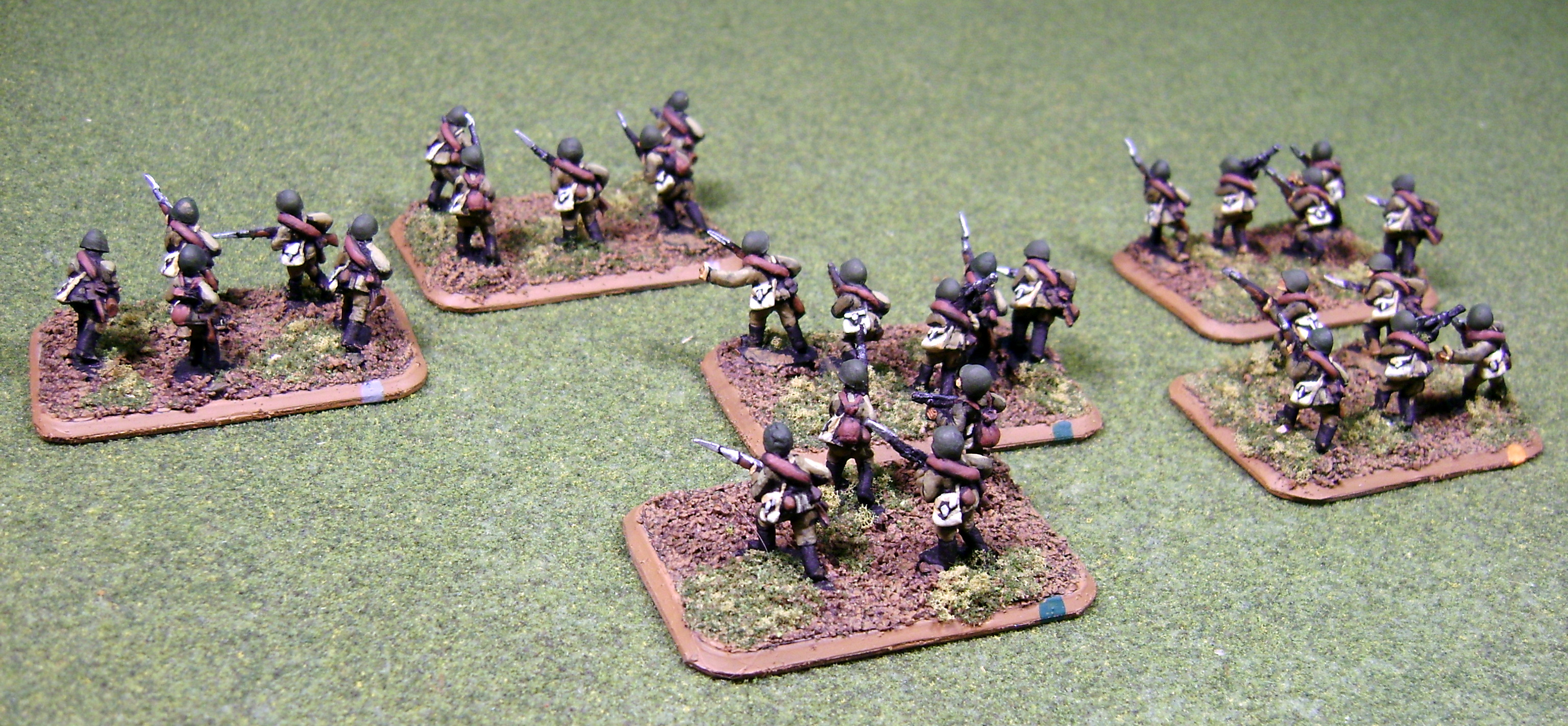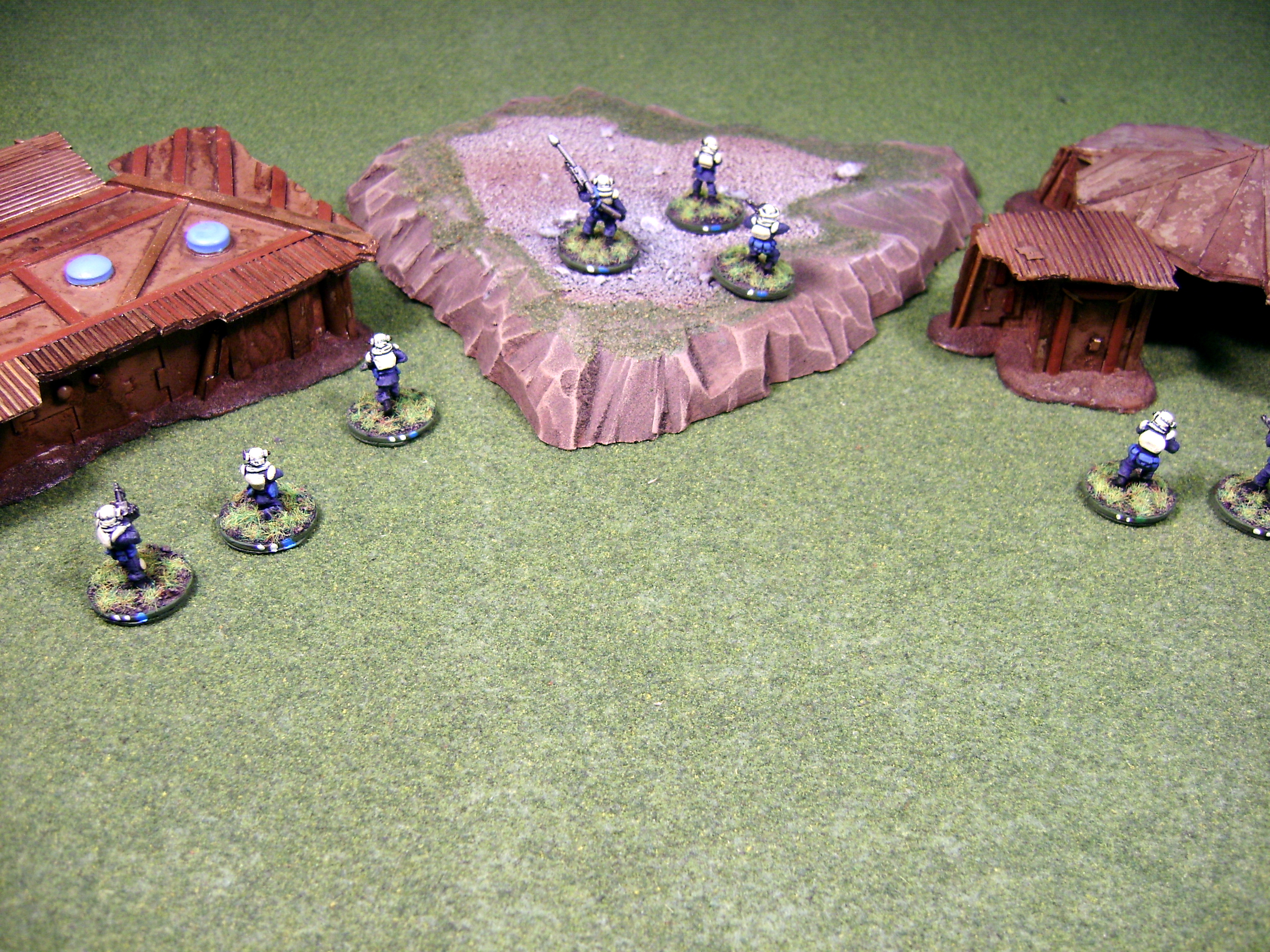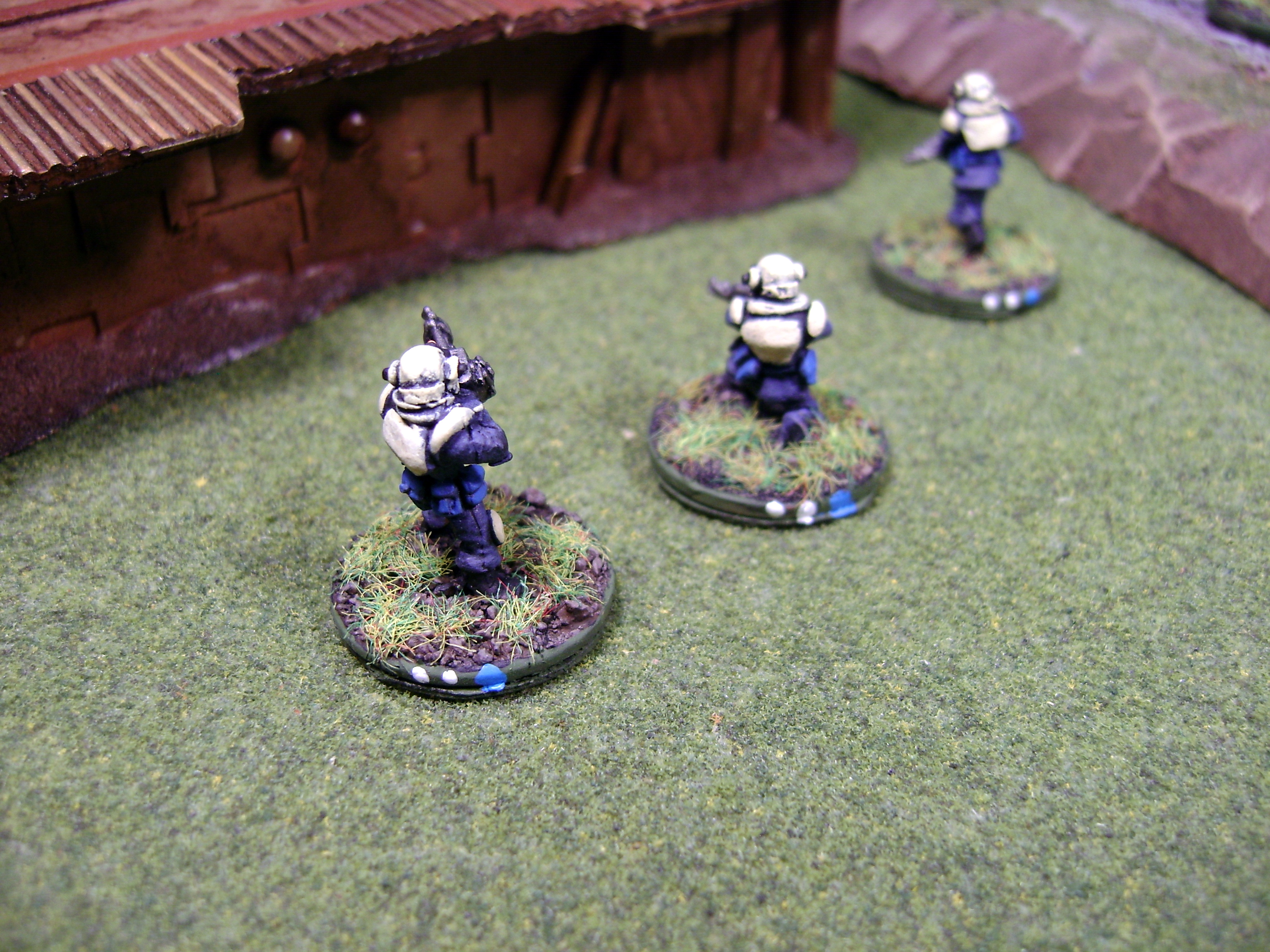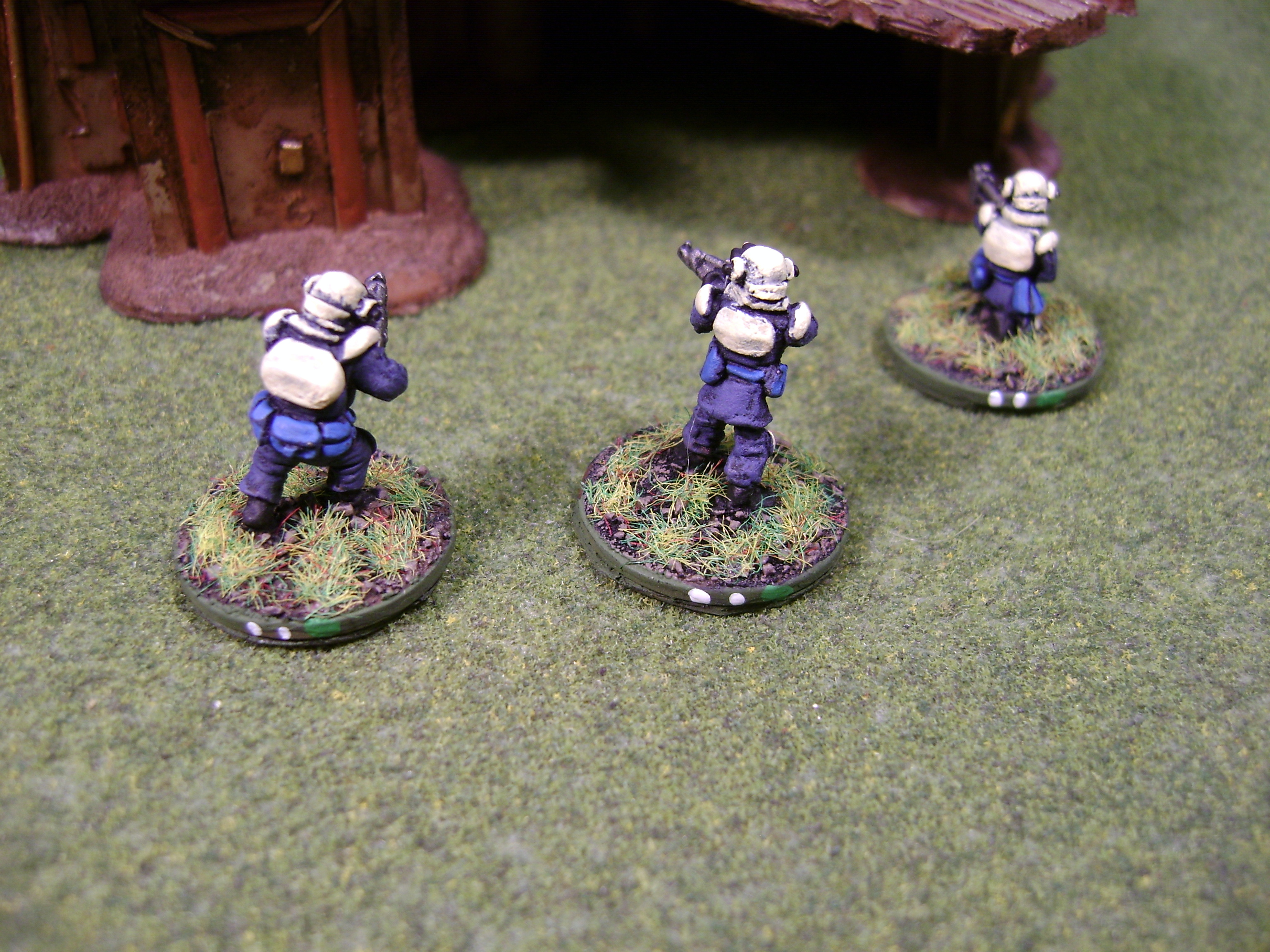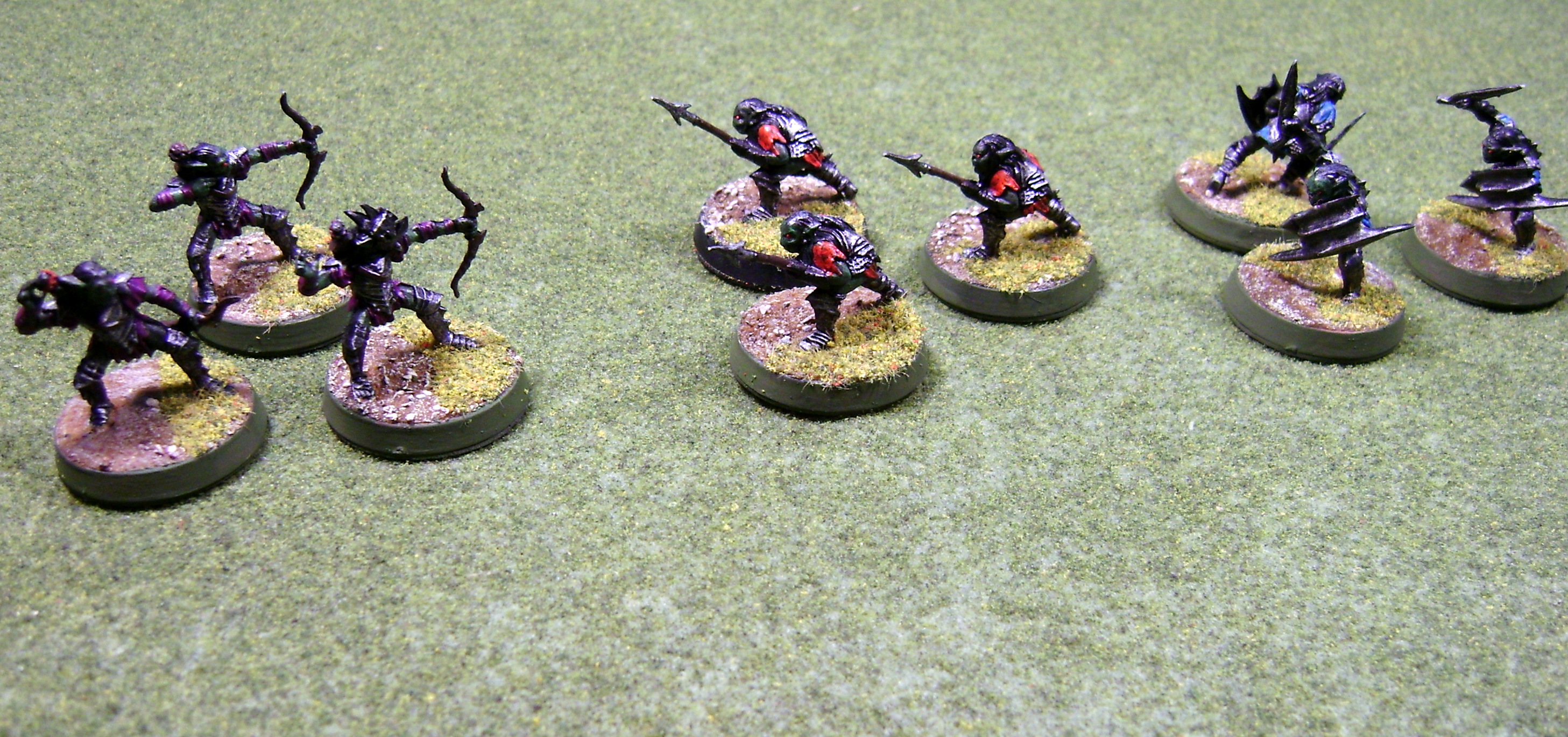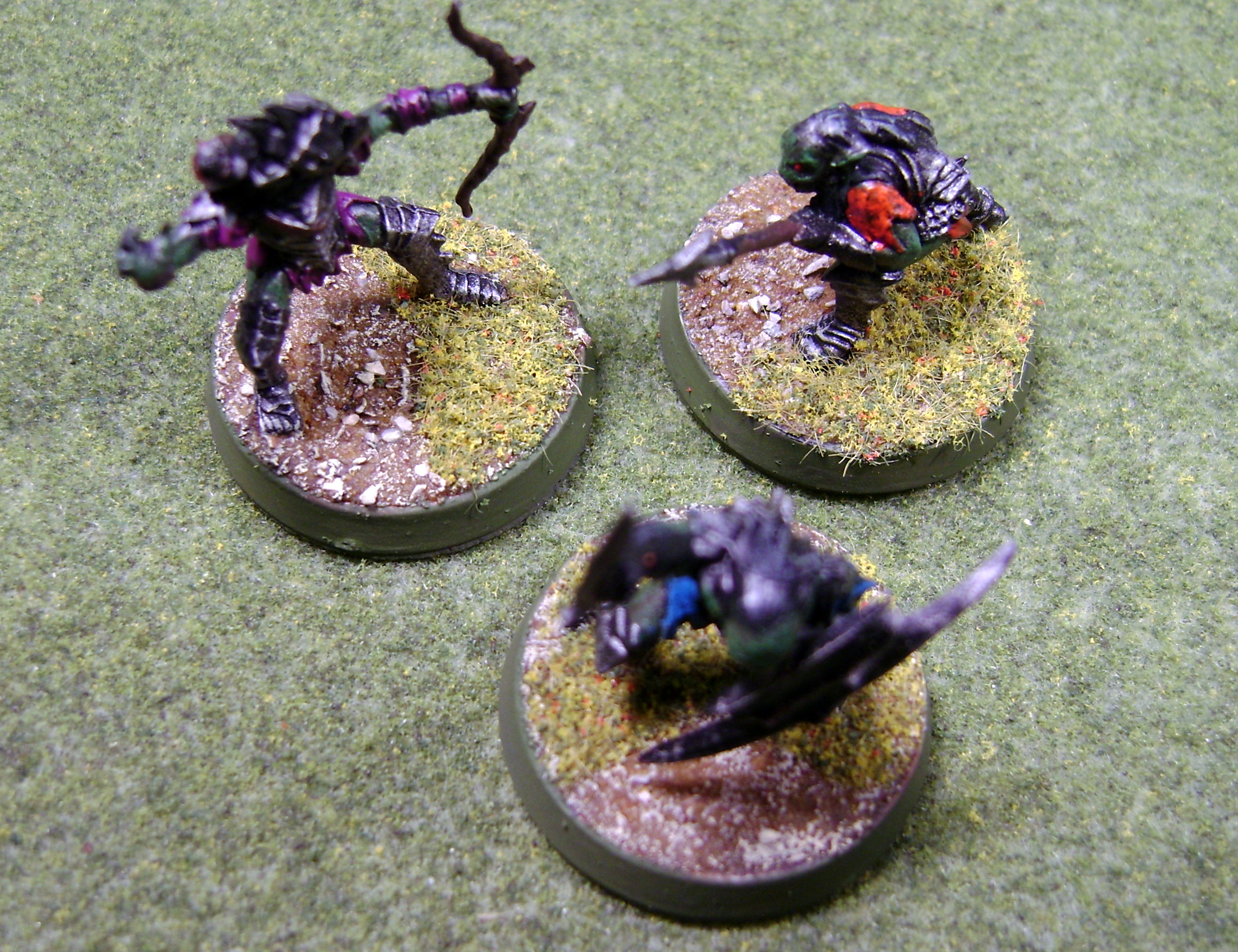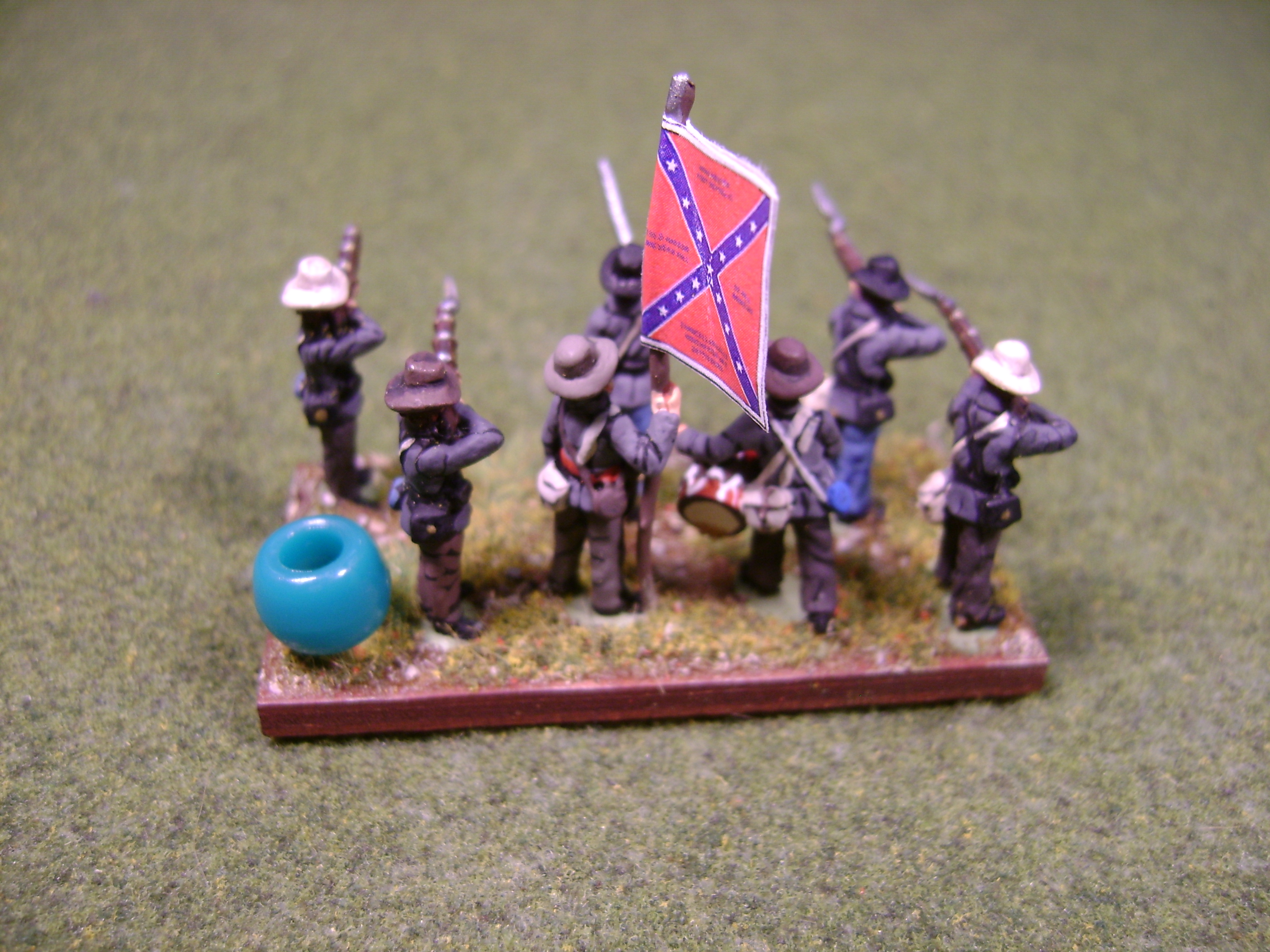 |
|||
 |
|
The following page originally appeared in the e-zine ACW Gamer. Basing: It's not just for ground cover anymore. We here at Scale Creep Miniatures recently put together a new product called the Small Scale Basing System. This is a set of products designed for basing and flocking bases of smaller miniatures - 15mm and smaller. As we were developing the instructions for the kit, we began to think about all the ways in which basing - including flock, gravel and other scenic bits - can be used to convey vital unit information. There is always a tension between keeping one's table clean and aesthetically pleasing on the one hand, and ease of game play on the other. Unit labels, markers, chits, etc. can seriously detract from the visual appeal of a game. Fortunately the gamer has tools to alleviate this while also making games easier to play. One of these is making creative use of the groundcover on one's bases. Following are some ideas for how to use basing as a game aid or unit information system. [1] CHAIN OF COMMAND One simple piece of information is unit organization. Is that 1st squad of 2nd platoon or 4th platoon? Does that battalion belong to the 57th or the 49th? There are a number of easy ways to mark units. One is with small color ID tags on the rear of the base. Assign a unit a color, with sub units receiving stripes or dots to identify them. For example if you have three platoons of three squads each, 1st platoon gets a yellow stripe, 2nd platoon gets a blue stripe, 3rd platoon gets green. Here are a couple examples from my Flames of War collection:
The individual squads then get small stripes in a contrasting color painted in as well. So 1st squad gets one stripe, 2nd squad gets two stripes, 3rd squad gets three. Platoon assets can get no stripe. Special squads can then also be marked. The command stand gets a round dot, while 2nd in command gets two dots. Observers can get a mark as well (I like two dots side by side that look sort of like binoculars). This system makes it easy to identify units while having a minimal impact on the look of your game. Here is an example from a 15mm SciFi game: Again close ups help us see which troops are involved in clearing this little settlement. 1st Platoon (blue stripe) has troops from 1st squad on the hill and 2nd squad on the left flank. 2nd Platoon (green stripe) has troops from 2nd squad on the right. The white dots naturally indicate which squad the unit belongs to.
Another way to mark units if you don't like colored stripes is with bits of gravel. On the right rear mark the squad, on the rear left the platoon (or battalion and brigade, or company and battalion). One bit of gravel for 1st squad, two bits for 2nd squad and so on. Of course you can use grass tufts, bits of twig, whatever looks good to you. Here are some grunts from Vietnam showing 1, 2 and 3 gravel bits to show which squad they come from. Yet another way to sort units is by pattern of ground cover. For example unit A gets grass on the front half of the base, but rock on the rear. Unit B gets grass in the left side, rock on the right. Unit Z gets an "hourglass" pattern. This system disappears when you play but is easy to see when you need to (it reminds me of those pictures where at first it looks like an old witch, then it looks like a young girl and you can go back and forth seeing each in turn). Of course you can also use different types of ground cover in this as well (1st company gets yellowish grass tufts, 2nd company gets dark green grass, 3rd company gets light green tufts). Here is an example: these goblins belong to three different units. Each has a different ground cover pattern. Can you spot them? How about with a close up? The first unit has flock only on the left half of the base, like so: The second unit (purple cloth) has flocking only on the front and the third (light blue) has an hourglass shape, with flock on both flanks with bare front/rear. Yet another option is simpler yet: paint the edge of each base in a matching color. Using colors that mix with ground cover - greens, tans and browns, the units are easy to see yet don’t distract like red or yellow. And you can make leaders easy to spot with contrasting colors. Leaders can always have a black edge, or a specific green or brown. (Note the center goblin above has a black base edge where all his fellows have a green base edge.) UNIT STATS Another key need for ease of game play is providing easy access to unit stats. Again, basing can ride to the rescue. Games that have one main key stat are easiest to mark. Two Hour Wargames, for example, grade all soldiers on a scale of 3-6. So an easy way to mark them is with gravel pieces. Three stones = grade 6, zero stones = grade three (quality of each unit is number of stones plus three). Here is an example: Likewise you may have units that have a certain status (Hero, Elite, etc.) These can again be marked with color or ground cover. One way to mark them is simply to use a different edging color to the base. Thus if you use medium green as the edge color of your bases, give leaders a dark green edge, and heroes get brown. These colors are easy to identify on the tabletop but will also blend in with your scenery. A bit of twig is another very useful marker because it does not need to be glued to the base. So you can mark heroes with a bit of twig that can be removed and changed from game to game. UNIT STATUS Yet another common need for gamers to mark unit status. Routed, shaken, berzerk - these all need to be identified on the table. Common markers are bits of pipe cleaner or "puff balls" of various colors. But again these are visually jarring and you have to remember to move them with the unit. Basing can ride to the rescue here as well. An easy solution is to provide special basing for command stands. One method is to leave a "bare" spot on the command stand for a small die. Many games mark units with strength points, morale levels, etc. and use a small D6 to reflect the current level. Another is to add a small post to the rear of the command stand. You can then use small tube-shaped beads that fit over the post as unit markers. They are small, but highly visible, minimally distracting, and they move with the unit automatically. In a craft store you can find "melty beads" cheap. $5 will get you a lifetime supply in dozens of colors. Or you can pick up packs of solid colors. You can even get earth tones so the visual impact is very small. We hope you find these tips useful, and will give you an appreciation for just how much information can be packed in to a few bits of rock or grass that will not only make playing your game smoother, but also improve the overall look of your table at the same time. Mark Severin |
 |
